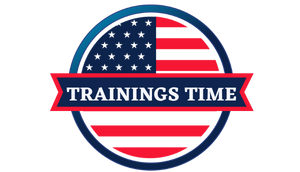Description
RECORDED TRAINING COURSE
Employers should know that the employee handbook is one of the documents that is reviewed by attorneys who are looking to sue them. Having an employee handbook is critical to a company and having it updated with all the necessary policies is crucial. Labor research has proven that Employers have a delay in implementing new regulations and adding it to Employee Handbooks or stand-alone policies.
New regulations go hand in hand with employee handbook and standalone policy updates. As a compliance officer, I am always providing support to Employers and professionals and see what the gaps are when protecting employees. Federal, State, and local regulations have an impact in maintaining workplace compliance and Employers need to be aware that when Federal, State and Local regulations clash the regulations with the most benefit for the employees supersedes.
That is why it is important to be aware and follow all workplace regulations.
Now more than ever, Employers need to ensure employee handbooks are up to date, consistent, includes all new regulations and changes that involve the workplace. This training will focus on some of the major errors that are made when updating employee handbooks and how to avoid some of the large penalties.
SESSION HIGHLIGHTS:
- Learn what policies must be included for 2023
- 2023 Federal regulations are already listed for employee handbooks
- Learn what policies are consistently missed by Employers
- Which handbook errors impact COVID-19 Vaccinations
- Why do Employers need to be aware of what the NLRB updates are on employee handbooks?
- Common mistakes
- Updates on policies for masks and vaccines that need to be included in employee handbooks
- New update called bystander discrimination and harassment reporting and what is the Employer risk
- State regulations need to be revised with over 18 new regulations impacting COVID-19 vaccines mandates, sexual harassment
- Learn how the At-Will statement can cause litigation nightmares
- Learn why grooming and dress code policies can be discriminatory practice
- The Civil Rights Act of 1964 was updated to include sexual orientation by the Supreme Court in 2020 but Employers have not updated their handbook
- Learn how tracking reasonable accommodation requests for Covid-19 can avoid disability and discrimination allegations
- Learn how workplace vaccine mandates need to be updated in the employee handbook
- Learn why teleworking policies are a landmine if not written appropriately
- Learn how vaccine mandates by safety in the workplace enforcement by OSHA needs to be included even though it has not been established
- Learn how the Employee Assistance Programs (EAP) can be a huge benefit when trying to manage employee relations issues
- Why are complaint procedures creating havoc for Employers?
Why You Should Attend:
No matter what state you do business in, or how many employees you have, you will be subject to state and federal employment laws. Your handbook not only communicates these various entitlements and obligations to employees but is useful in demonstrating that your organization strives to be compliant with these regulations. Do not underestimate the legal impact your employee handbook can have on you risk strategy!
Who Should Attend:
- All Employers
- Business Owners
- Company Leadership
- Compliance professionals
- HR Professionals
- All professionals
- Compliance Professionals
- Managers/Supervisors
- Employers in all industries
- Small Business Owners
Note: You will get access to the Recording link and E-Transcript; in your account and at your registered email address.





